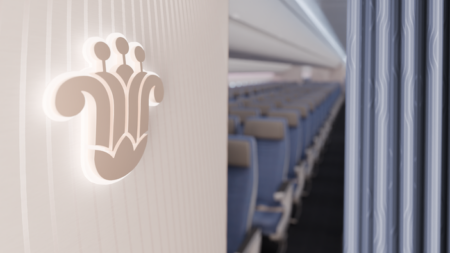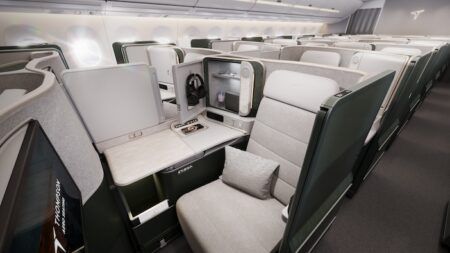March 16, 2015: In April 2014 Telefónica and Vueling announced that they are working together to install wi-fi in the airline’s fleet. The first aircraft to be so-equipped – a 180-seat Airbus A320 – has become the first aircraft in a European low-cost airline fleet to offer high-speed wi-fi.
The system uses HTS satellites, which work using a payload with many beams, each having small surface coverage (in comparison with conventional satellites), which allows the power to be increased at each point of the beam and the frequencies to be reused in a similar way to how the process is performed on a mobile network. This configuration allows the satellite to have a bandwidth performance at least 70 times greater than that of conventional satellites – the result is download speeds of up to 20Mbps onboard.
Installation process
The wi-fi installation process begins with the removal of the aircraft’s interior ceiling panels so three wireless access points (WAPs) can be installed. Additional equipment is also incorporated, including a WEB (wireless Ethernet bridge), WDU (wireless data unit) and the APSU (antenna power supply unit). Under the cockpit, in the avionics bay, is the heart of the system: the satellite modem, which sends and receives the signal to and from the antenna, and is also the interface with the baseband signal processing equipment.
The Ka-band antenna is installed on top of the fuselage. This antenna has the ability to be mechanically orientated (both elevation and azimuth), so that the satellite can be located and antenna positioned in the right direction while the aircraft is flying. This antenna picks up the satellite signal and transmits it inside the cabin to allow passengers to enjoy Internet access while flying. Finally, a protective dome is installed over the external antenna, which is in turn covered by a fairing in order to preserve the aerodynamics of the aircraft.




